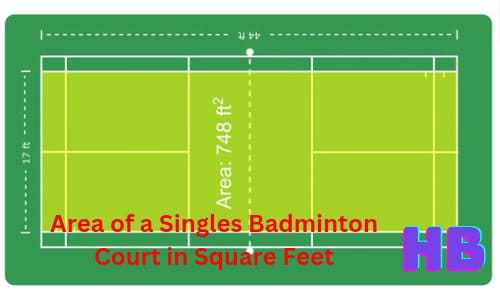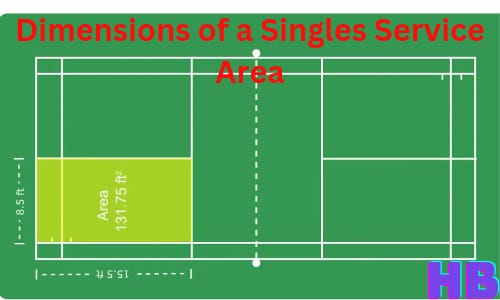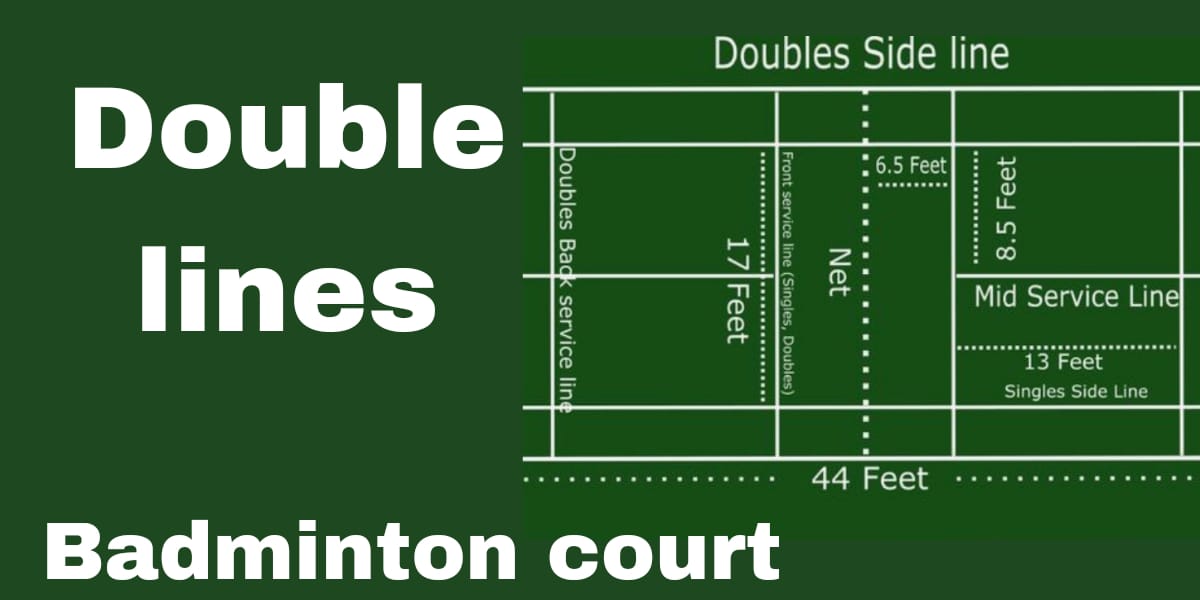Step onto the doubles badminton court, a vibrant stage for thrilling rallies and violent competition. But before you unleash your smashes and drop shots, understanding the doubles badminton court lines is important. These seemingly simple markings define your playing space, dictate legal shots, and ultimately, influence your strategic dominance. So, get ready to dive into the lines that rule the doubles court and master your badminton journey!
Doubles Badminton Court: A Line-by-Line Exploration
A doubles badminton court lines boasts several key lines, each playing a pivotal role in gameplay:
- Sidelines: These prominent boundaries, stretching the entire length of the court, mark the limits of play. Stepping outside them results in an “out” call.
- Center Line: This central divider, stretching across the full width of the court, separates the two opposing teams. It plays a crucial role in service positioning and shot legality.
- Short Service Line: Located 1.98 meters (6.5 feet) from the front sideline, this line defines the minimum service depth in doubles. Serves must land beyond this line within the diagonally opposite service court.
- Long Service Line: Placed 0.72 meters (2.36 feet) from the back sideline, this line creates the “tramline rule” in doubles. Players can reach over the net on their doubles service lines to hit the shuttlecock, effectively creating a taller “service net” of 1.68 meters (5.6 feet) on those specific lines.
- Doubles Service Courts: Each side of the court is further divided into two diagonally opposite service courts by the center line and the short service line. Serves must land within the designated service court diagonally opposite the server.

Significance of doubles badminton court lines:
- Exploiting the Tramline: Mastering the doubles badminton court lines can give you a strategic advantage. Serve deep towards the long service line on your doubles service line, forcing your opponent to stretch and potentially mishit their return.
- Controlling the Center: Dominating the center line allows you to cover a larger area of the court and react quickly to opponent shots. Utilize drop shots and net play near the center to keep your opponents on their toes.
- Reading the Lines: Anticipate the opponent’s shots based on their positioning relative to the lines. Are they near the sideline, hinting at a cross-court drive? Or poised close to the center line, suggesting a net shot?

Beyond the Lines: Tips and Tricks
- Visualize the Court: Imagine the court layout and lines in your mind, even without markings. This mental map helps you anticipate shots and react instinctively.
- Practice Serving: Perfect your serve accuracy, aiming strategically within the service court boundaries while utilizing the tramline rule in doubles.
- Communicate with Your Partner: Clearly communicate your court coverage intentions and strategize based on the lines’ positions.
FAQs:
Q: Are the lines the same for singles and doubles badminton?
A: The court dimensions and lines differ slightly between singles and doubles. The main difference is the presence of the doubles service lines and the shorter service depth requirement in doubles.
Q: Can I step on the lines during play?
A: While stepping on the lines during play is technically allowed, it’s best to avoid it, as it can affect your footwork and potentially obstruct your opponent.
Q: How can I remember the different lines and their functions?
A: Practice regularly, visualize the court layout, and pay attention to how experienced players utilize the lines to their advantage. Diagrams and visual aids can also be helpful.
Conclusion:
By understanding and strategically utilizing the doubles badminton court lines, you unlock a higher level of play. Remember, mastering the lines is like learning a secret language of the court, empowering you to anticipate, outmaneuver, and ultimately, dominate your opponents. So, step onto the court, embrace the lines, and unleash your badminton prowess

